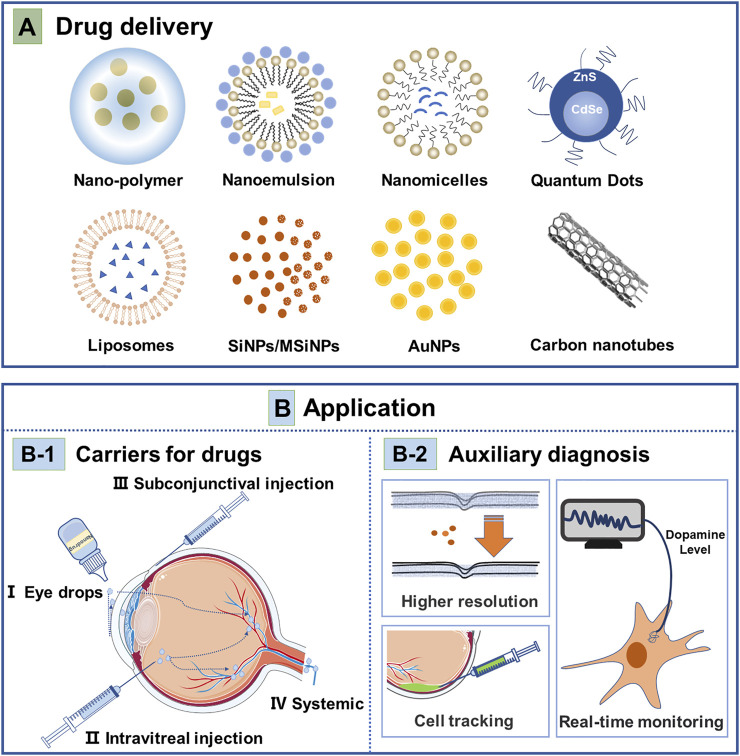FIGURE 1.
Nanotechnology-based strategies for treatment and diagnosis of ocular disease. (A) Drug delivery; The main nanoparticles currently being investigated for drug delivery in ophthalmology are nano-polymer, liposomes, nanoemulsion, nanomicelles, quantum dots, (mesoporous) silica nanoparticles (SiNPs/MSiNPs), gold nanoparticles (AuNPs) and carbon nanotubes. (B) Nanoparticles application in ocular diseases. B-1 Carriers for drugs: There are currently three routes of drug delivery by nanocarriers, mainly eye drops, intravitreal injection, subconjunctival injection, and systemic administration. B-2 Auxiliary diagnosis includes nanoparticles as a contrast agent to enhance the resolution of ophthalmic OCT and PAM examinations, nanoparticles fused to cells can tracer transplanted cells in cell transplantation therapy, and nanoparticles allow real-time detection of intracellular dopamine levels.

